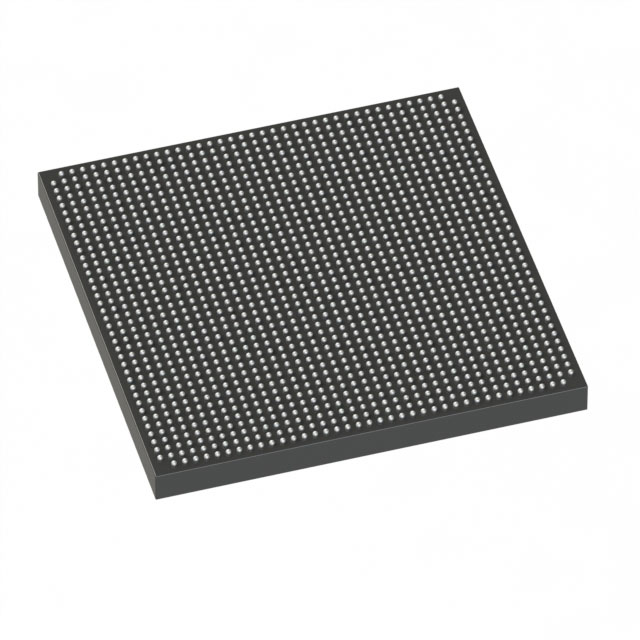Release Date: 06-25, 2024
In the fast-evolving world of technology, maximizing performance and efficiency is paramount. The 5ASXMB5G4F40C4 chip, known for its advanced features and robust performance, stands out as a vital component in numerous high-tech applications. To provide deeper insights into harnessing its full potential, we have gathered expert opinions from ChipGuest. This blog post will delve into their recommendations, covering key features, optimization strategies, and practical applications.

The 5ASXMB5G4F40C4 chip is a powerful FPGA (Field-Programmable Gate Array) from Altera, now part of Intel. It belongs to the Stratix V family, designed to deliver high performance, low power consumption, and enhanced flexibility for complex computing tasks.
Key Features
- High Performance: The chip boasts high processing power, making it suitable for demanding applications such as data centers, telecommunications, and high-performance computing.
- Low Power Consumption: Despite its robust capabilities, the chip is engineered for energy efficiency, reducing operational costs and extending device lifespan.
- Advanced I/O Capabilities: With multiple I/O options, the chip supports various communication protocols and interfaces, enhancing its versatility.
- Scalability: The FPGA architecture allows for customization and scalability, enabling developers to tailor the chip to specific needs and future-proof their designs.
To unlock the full potential of the 5ASXMB5G4F40C4 chip, we turned to the experts at ChipGuest, who provided valuable insights into optimization techniques and best practices.
1. Leveraging Parallel Processing
One of the primary advantages of FPGAs is their ability to perform parallel processing. According to ChipGuest experts, maximizing the performance of the 5ASXMB5G4F40C4 involves leveraging this capability to its fullest.
Implementation Tips
- Identify Parallel Tasks: Analyze your application to identify tasks that can be executed simultaneously. FPGAs excel in handling multiple processes concurrently, unlike traditional CPUs.
- Optimize Data Flow: Ensure efficient data flow between parallel tasks to minimize latency and maximize throughput. Use DMA (Direct Memory Access) where possible to speed up data transfers.
- Utilize Embedded Multipliers: The 5ASXMB5G4F40C4 features embedded multipliers that can accelerate mathematical computations. Utilize these to enhance performance in tasks involving heavy arithmetic operations.
2. Power Management Strategies
Effective power management is crucial for optimizing both performance and efficiency. The experts at ChipGuest emphasize the importance of balancing power consumption with processing needs.
Power Optimization Techniques
- Dynamic Voltage and Frequency Scaling (DVFS): Implement DVFS to adjust the voltage and frequency of the FPGA dynamically based on workload requirements. This helps in reducing power consumption during low-demand periods.
- Clock Gating: Use clock gating techniques to disable clock signals to inactive parts of the FPGA, thereby reducing unnecessary power consumption.
- Thermal Management: Ensure proper thermal management by using heatsinks, fans, or advanced cooling systems to maintain optimal operating temperatures and prevent thermal throttling.
3. Efficient Resource Utilization
Efficient utilization of the FPGA's resources, such as logic elements, memory blocks, and I/O pins, is essential for maximizing performance. ChipGuest experts provide the following strategies:
Resource Optimization Tips
- Modular Design Approach: Design your application in modular blocks that can be independently optimized and reused. This approach simplifies debugging and enhances scalability.
- Pipelining: Implement pipelining techniques to improve throughput and resource utilization. By dividing tasks into smaller stages, you can keep all parts of the FPGA busy and reduce latency.
- Resource Sharing: Where possible, share resources between multiple tasks to minimize redundancy and make efficient use of the FPGA’s capabilities.
4. Advanced Debugging and Profiling
Effective debugging and profiling are vital for identifying performance bottlenecks and optimizing the FPGA design. ChipGuest experts recommend using advanced tools and methodologies for this purpose.
Debugging and Profiling Tools
- Signal Tap Logic Analyzer: Utilize the Signal Tap logic analyzer to capture and analyze real-time data from the FPGA. This helps in identifying timing issues and functional errors.
- TimeQuest Timing Analyzer: Use the TimeQuest timing analyzer to perform detailed timing analysis and ensure that your design meets all timing constraints.
- Power Analyzer: Employ power analysis tools to monitor and optimize power consumption. This can help in identifying power-hungry components and optimizing their performance.
The versatility and performance of the 5ASXMB5G4F40C4 chip make it suitable for a wide range of applications. Here are some examples:
Data Centers
In data centers, the need for high-performance and energy-efficient processing is critical. The 5ASXMB5G4F40C4 chip, with its parallel processing capabilities and low power consumption, is ideal for accelerating data-intensive tasks such as database processing, real-time analytics, and AI inference.
Telecommunications
Telecommunications infrastructure requires robust and flexible solutions to handle the ever-increasing data traffic. The advanced I/O capabilities and scalability of the 5ASXMB5G4F40C4 make it suitable for applications such as network switching, signal processing, and protocol handling.
High-Performance Computing
In high-performance computing environments, the demand for rapid computation and large-scale data handling is paramount. The FPGA’s ability to perform complex computations in parallel makes it an excellent choice for scientific simulations, financial modeling, and other compute-intensive tasks.
Industrial Automation
Industrial automation systems benefit from the reliability and real-time processing capabilities of the 5ASXMB5G4F40C4. It can be used in applications such as robotics, process control, and machine vision, where precise and timely responses are essential.
Conclusion
Maximizing the performance of the 5ASXMB5G4F40C4 chip requires a deep understanding of its features and capabilities. By leveraging parallel processing, implementing effective power management strategies, optimizing resource utilization, and utilizing advanced debugging tools, you can unlock the full potential of this powerful FPGA.
The insights from ChipGuest experts provide a valuable roadmap for achieving optimal performance in various high-tech applications. Whether you are working in data centers, telecommunications, high-performance computing, or industrial automation, the 5ASXMB5G4F40C4 chip offers the versatility and power needed to drive innovation and efficiency.
Explore the possibilities with the 5ASXMB5G4F40C4 and take your projects to the next level with these expert recommendations.